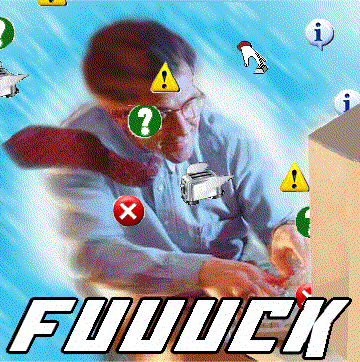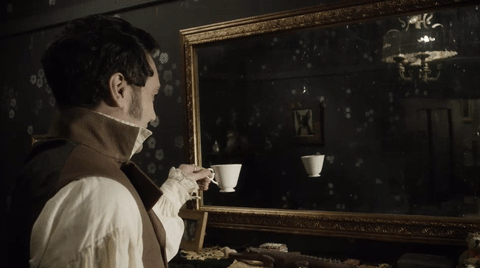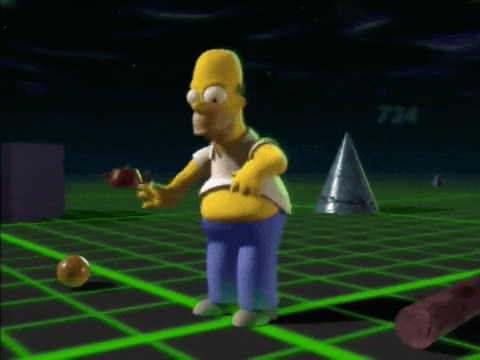DMT with two eyes open, part I: Visual phenomena
Posted on 19 February 2023 by
I feel the need to blow off a little steam. I originally set up this blog so I could write some gosh darned trip reports, and write some trip reports I shall.
The vividness of the DMT experience is difficult to understand if you haven’t seen it for yourself. I have been asked before if psychedelics are indeed like the ubiquitious Alex Grey paintings – well, I can say, DMT is.
Andrés Gómez Emilsson of the Qualia Research Institute has a widely-read post on the subjective effects of DMT, called The Hyperbolic Geometry of DMT Experiences: Symmetries, Sheets, and Saddled Scenes. As one increases dosage, the subjective experience undergoes a series of repeatable phase transitions. Andrés outlines a six level model for these, discussing the phenomenology in detail for each:
Most notably, from the Magic Eye Level and beyond, the geometry of the worldsheet can also undergo hyperbolic curvature, and Andrés also spends some time theorising as to how this might be possible.
This all essentially squares with my experience. I consider this model to be a trustworthy map of a strange territory. I would highly recommend reading it if you are unfamiliar with DMT.
I am of the belief that a shallow-first approach is the appropriate way to study the effects of psychedelics, distributing intensity of experiences according to a power law. My intent is not to chase a high-intensity experience every time, as I consider it more practical to study the phenomenology as it progresses from a to b to c than if I were to leap straight from α to ω. So the majority of my experimentation concerns smaller dosages.
My previous experience with DMT has been mostly in line with how it is commonly used – lying down in a dark room with my eyes closed, as the lively internal realms it generates are ultimately fragile and can be easily disrupted by external stimuli. This time around, I decided to eschew the sensory deprivation element in favour of a more casual approach, using DMT with my eyes open in a variety of different settings.
I found myself startled and delighted by the effects.
Stages of the eyes open experience
I spent several weeks experimenting with DMT before I felt that I’d learned enough, and by the end of this period I’d accrued a large swathe of notes. I found it challenging to map Andrés’ model onto the eyes open experience, and I wound up using my own model to loosely categorise my notes and help make sense of what I was seeing:
Apart from the threshold stage, which is identical to that described by Andrés, these stages are classified by their level of criticality – criticality being a property of some dynamic systems, the point between order and chaos at which a minimal amount of energy is required to switch between states, or in this case, alternative interpretations of the current sensory input.
It is shown that LSD shifts brain dynamics towards criticality, resulting in a larger repertoire of brain states observable under fMRI – demonstrating that criticality can have genuine neural correlates, and is thus potentially meaningful to discuss in this context.
I should note that during this period of time I was using a disposable vape pen to inhale vaporised DMT, so I had no accurate way of gauging my dosage. In any case, I believe that these stages are not entirely defined by dosage, but also by the amenability of the current stimulus to alternative interpretations.
Subcritical
Modest doses of other psychedelics will change the way things look, tesselating any symmetries found in their textures, among other things. However, these visual phenomena generally do not change the three-dimensional shapes of objects.
DMT wields its influence across a far greater radius than its serotonergic brethren. DMT, remarkably, also increases symmetry volumetrically.
It thrives in an artificial environment, if sufficiently vibrant. Flat surfaces appear smoothed over, sometimes tiled with their own textures, while three dimensional objects conform to a global gestalt – as if aligned to a grid by an invisible carpenter with set square and ruler.
As I increase the dose, this normalisation process becomes more extreme, decimating geometry until the dimensions of objects begin to snap to small integer aspect ratios. Let’s say you apprehend a flatscreen television with an aspect ratio of 16:9 – perhaps it will adjust its shape to fit an aspect ratio of 2:1.
At one point I thought to test this out with a handful of children’s blocks that I conveniently found around the house, expecting that these already highly symmetrical shapes would tolerate no further symmetrification. I laid out a selection of cubes and cylinders on the coffee table before me – and indeed, nothing happened to them.
I should be clear that there is nothing nebulous or ethereal about all this. The DMT changes the rendering parameters of my world simulation via some means, and what I’m seeing appears with the same fidelity as it does in waking life, perhaps even crispier. In fact, if I take my glasses off, the fidelity decreases correspondingly, as if this over-reified object-a-rama is reliant on the input’s spatial frequency spectrum to maintain its level of acutance.
With my glasses back on, I can bob my head about and navigate about this synthetic environment just as I can in sobriety. The objects I’m seeing maintain their relative positions with respect to myself and each other, just as they ordinarily would.
These effects can be studied just as well in two dimensions as they can in three. It loves computer screens. I write this up on a slight afterglow; I want to talk about just how fantastic Sublime Text 4 is, like a platonically idealised software realm of monospaced text and neon rectangles. The ghost of Steve Jobs would weep with joy if he could see through my eyes how my telephone looks.

Often a kind of spatial frequency domain afterimage would manifest itself. At one point I spent some time fixating my attention on a vase full of lilies; afterwards when I looked at my phone, the text and rectangles appeared more rounded. Conversely, if I first looked at my computer and then at my hands, my fingers would appear more blocky than they would otherwise.
Out in nature, organic shapes also appear symmetrified, but with an overall aesthetic in concordance with the originating material. Flora and geography alike appear rounded and smoothed or impractically angular, some aspects low poly, some more reminiscent of NURBS. Early autumn maple trees appear particularly sublime, identical orange leaves repeating themselves along branches. As if in response, my mountain bike spawns greebles across its frame, a mechanical intrusion into a harmonious domain. I could go on indefinitely.
Critical
This stage is somewhat thin; I mostly include it for the sake of a full ontology.
When approaching the critical stage, the DMT can be significantly more liberal with its interpretation of the current stimulus, often deviating significantly from baseline reality. The number of viable interpretations can also increase dramatically.
I began to develop little tests for gauging the intensity of the experience. I would look at my hands, or my phone. I would spin the vape around once in my fingers. If I see it go around twice, I’m in.
Quite often, an artificial depth map would be constructed out of the available visual stimulus. On my computer, the icons and lines of text escape the flat plane of the application window, rearranging themselves into staircase patterns as they hover over my screen.

This stage is also characterised by some degree of agency over how a given spatial interpretation is chosen. I spent one afternoon staring at a print I found of a woman sitting behind an bouquet of flowers. Again, a depth map was constructed out of the flat image, floral arrangement gently waving in front of the artist’s muse. I found that with subtle attentional modulations I could modify the number of flowers – first four, then six, then five poppies sprang forth. This was not unlike the mental move required to flip a Necker cube – but it felt like I’d just learned the art of airbending.
I’ll share a story which may serve to illustrate this further.
My friends were out and I was alone in the place we were staying. I don’t really like to mess around with DMT too much around other people, as it can get me into a mood – so I’d spent the day swanning about the house in a blue silk robe and feather boa, writing and listening to music and puffing away merrily, making the most of the time I had to myself.
DMT will make faces look prettier, more symmetrical, but, as we know by now it generally does that to most things. I thought about an earlier time when I’d looked at my friend across the room, and it appeared for all the world that he had held a mirror over one side of his face.
There was a full length mirror in the lounge and I thought to see what was in there. A smooth-skinned, cartoonish visage stared back at me, maybe equal parts anime and Pixar. My hair was perfect.
Something I’d discovered earlier was that my facial expression could be highly coupled to emotional expression. When I allowed myself to smile, I couldn’t help but feel a rush of joy stir my heart.
I beamed at myself through the mirror, and my face brightened even further, skin softening and cheeks raising in a subtle caricature, zygomaticus and orbicularis seemingly doing much heavier lifting than I thought possible.
I reasoned that I could have some more fun with this if I tried something else. I alternated frowning with grinning maniacally, doing my best to summon the corresponding mood for each face – struggling to contain my delight as the emotional transformations were applied, exaggerating my features one way then another.
I scowled like an ogre, gurning my lips. Textures churned and shadows lengthened. I hurled off the boa and bared my fangs to the mirror, raising my arms in a camp vampiric prance. My incisors elongated, and my eyebrows sprouted slight tufts. I remain convinced that if I’d taken it a little further, I could have given myself black eyeshadow and a widow’s peak.

Supercritical
Right as the critical stage is approached and surpassed, the number of alternative interpretations is explored extremely fast – buzzing with a haste and instability that feels like it is pushing against some kind of refresh rate limit.
Beyond this, everything goes haywire. There is a return to some degree of stability, as whole scenes rearrage themselves according to wild and unpredictable gestalts. Competing clusters of coherence may emerge as oscillatory processes phase-lock with one another, and separate subcomponents of a given scene can adopt quite incompatible aesthetics.
I only pushed the boat out this far a handful of times, so I may not be able to provide much in the way of a generalised description – but I can certainly tell another story which I think is representative of the sort of things that can happen.
Let’s be honest – I wanted to see what my naked body looked like on a large amount of DMT. For science. I made a cup of tea, took off all of my clothes, laid myself on top of my bed, and took a couple of big fat rips on the vape.
Well, I can tell you what my naked body looked like on a large amount of DMT – it looked like it was constructed out of metaballs, the shapes I recognised as those used to model blobby objects in old-school computer graphics.

The way I was rendering myself involved employing the minimum number of elastically-wrapped spheres required to model a human body to some arbitrarily low degree of precision, undulating in response to my movements like the wax in a lava lamp.
From a distance, my skin appeared smooth, but as I leaned in closer I could observe the keratosis pilaris on my legs texture-mapped onto the surface of these odd dumbbell-like shapes, reconfiguring itself into rhombic tiling patterns and circular mandalas.
I’m not sure what I learned from this particular experience, but what happened next was more educational. Apropos of nothing, the crumpled bedsheets leapt up over the bed, morphing into a three-dimensional grid sparsely populated with solid cubes, perhaps 250mm in breadth, faces textured with the pattern on the bedsheets. This voxel grid respected the rules of perspective, the cubes further away being appropriately reduced in size.
They writhed over one another in a pattern reminiscent of a three dimensional cellular automata, individual cells spawning and despawning in accordance with some unseen ruleset, frothing over with an effervescent vigour on a regular clock cycle.
This came at me fast. I was mesmerised. This was not what I had expected to happen. I was trying to study the human form, I didn’t expect some kind of hyperactive Minecraft. I found that I could switch my attention between my body and the bedsheets, and as I did, each cluster of coherence would dominate my sensorium in such a way that everything else seemed to fade away.
Thus far, this impressive display of geometric mayhem had been absent of any sign of external presences. Just as everything began to wind down, some disembodied entity leaned in, and muttered into my left ear with a deep voice: “bojingo bojango”. Bojingo bojango, I murmured back to it, somewhat dumbfounded at what I had just seen play out.
Beyond supercritical
I’m not sure what might lie beyond this supercritical stage. I would speculate that the visual effects become so all-encompassing that one would wind up in the Waiting Room stage described in Andrés’ post – but I rarely took it that far.
Eventually I had had my fill. I was accumulating notes faster than I could turn them into something legible. It was time to put down the vape pen and spend some hours staring at my text editor, to see if I could eke something coherent out of the morass of incoherent ramblings.
It is official smoothbrains.net policy to never under any circumstances tell anybody to take drugs, but I have one piece of advice for my fellow rational psychonaut: If you play around with DMT and discover something novel, don’t forget to get really psyched about it – DMT lends itself to an expanded emotional gamut, and in that state there’s nothing quite as exhilirating as the joy of discovery.